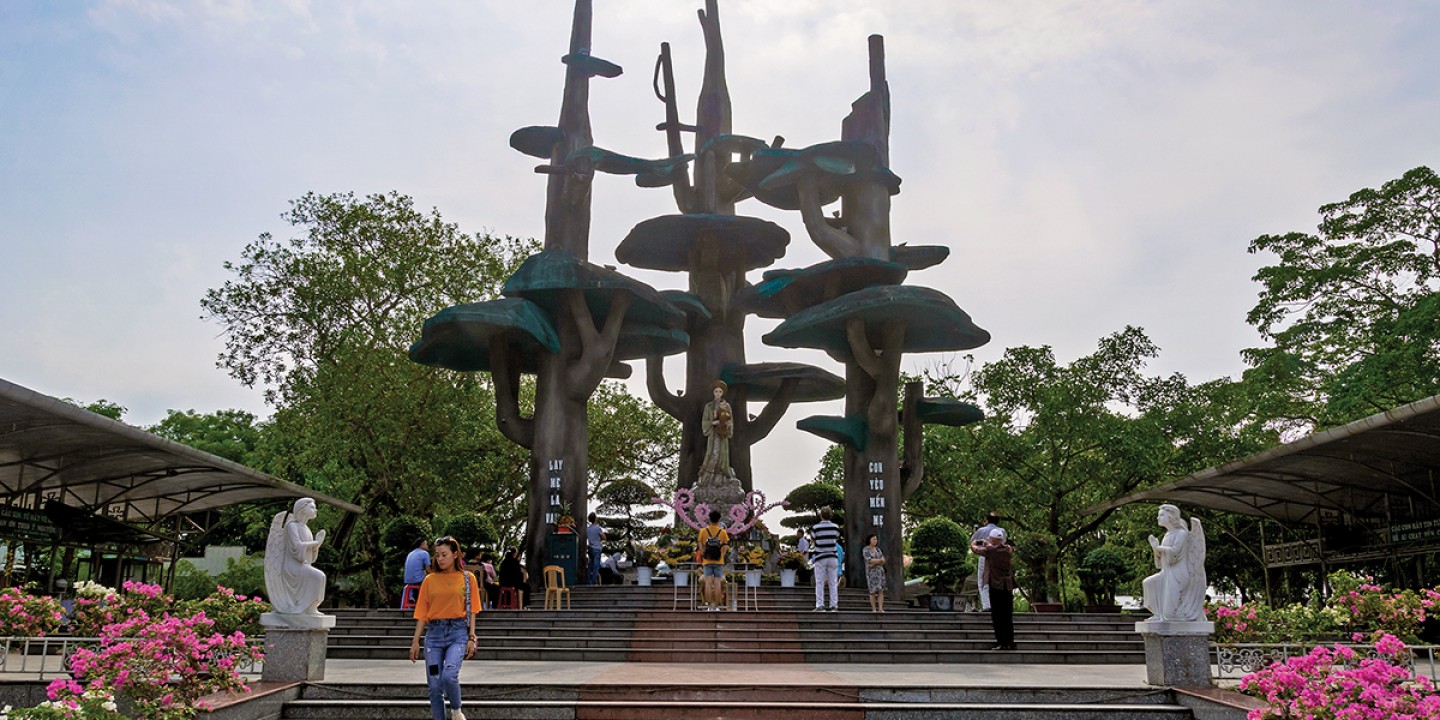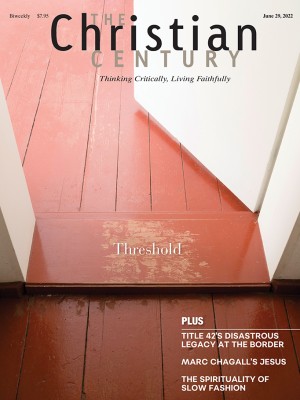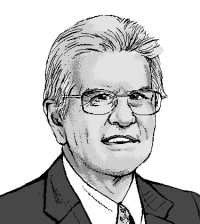Our Lady of La Vang
The power of the Virgin Mary for Vietnamese Catholics—at home and in diaspora

In recent years, I have visited some of the great American shrines to the Virgin Mary. From Emmitsburg, Maryland, to Chimayó, New Mexico, I have had very similar conversations with local volunteers. They are amazed and delighted by one group above all. These Vietnamese visitors, they say, they are so Catholic, and so devoted to the Virgin. And there are always so many of them! Who knew? Well-meaning White, American Christians continue to be startled to realize just how global their church has become.
Around the world, many Catholic societies portray the Virgin in distinctive local and national forms, reflecting their own stories and traditions. Often, those local connections are so strong that you can almost write a history of the Catholic presence in a given country by telling the story of that particular Virgin, of her deeds and her travels. Vietnam’s own Mary, the Our Lady of La Vang, is at once a symbol of survival and exile, of mission and globalization
Read our latest issue or browse back issues.
The story of Our Lady of La Vang dates from 1798, when a growing Catholic presence in Vietnam was being ruthlessly suppressed by the Buddhist and Confucian rulers of the empire. This was part of a brutal suppression that recurred sporadically over centuries, probably claiming hundreds of thousands of lives in all. In consequence, Vietnam’s Catholic Church understands itself as a true martyr church, quite as much as that of, say, Poland.
During the 1798 outbreak, hunted Catholics took refuge in remote areas, and at a place called La Vang, some believers had an encounter with a woman with Vietnamese features and dressed in the native áo dài dress and khan dong hat, whom they later concluded had been the Virgin. Besides offering them inspiration, she also supplied practical advice about how they could cure their illnesses by boiling leaves from trees found nearby. The name La Vang has multiple etymologies, some more plausible than others, but a common explanation is that it means “crying out,” calling loudly to plead for help.
One rough shrine that sprang up on the site was burned down in a later spasm of persecution, but as the Catholic presence grew stronger in the 19th century, La Vang became a significant place of pilgrimage. By the 1960s, political tensions were mounting in what was then South Vietnam, between Catholics and Buddhists as well as the obvious confrontation between communists and the West. The Catholic Church developed La Vang as a center of Marian pilgrimage, and in 1961 it became a minor basilica. That church still survives as a mission shrine, although conditions have changed utterly since the communist victory of 1975. Some of the Catholics who survived the extremely dangerous conditions of escape from the communists credited the Virgin with their rescue.
Today, Catholics make up only about 6 or 7 percent of Vietnam’s 100 million people but are far better represented in the widespread diaspora community, which has its largest component in the United States. Among those exiles and migrants, Our Lady of La Vang has become a potent symbol of continuity and national pride, of the faith that someday, the church will enjoy a far stronger position in the homeland.
Vietnamese Catholics in the United States have tended to be more traditional than other ethnic groups, with high rates of vocations: Vietnamese are very well represented in US seminaries. California’s Orange County alone has some 200,000 people of Vietnamese origin, with a Little Saigon in Garden Grove. In 2021, this became the natural choice for an imposing 12-foot statue of Our Lady of La Vang at the Christ Cathedral campus. Accompanying the statue is a martyr wall listing 117 Vietnamese who perished in persecutions. That Catholic cathedral, incidentally, reckons that about 40 percent of its congregation are Vietnamese, with Latinos and Chinese making up most of the remainder.
While Garden Grove is by no means the only diaspora center of devotion to La Vang—there are rival locations in Texas and Louisiana—it is a key one. Already, it is becoming a pilgrimage destination for visitors from elsewhere in North America. That is over and above the representation of the Vietnamese in more general Marian sites, such as Chimayó.
The Vietnamese diaspora extends far beyond the United States, and it can be mapped easily enough by following the Lady—that is, by finding La Vang dedications in churches, shrines, and schools. The Philippines, Canada, and Australia all have their candidates.
As with any ethnic group, loyalties to the original homeland will fade over time as new generations move away from the certainties that guided the first arrivals. For now, however, expect to see plenty of Vietnamese faces in those older American Catholic shrines. And expect old-stock Catholics to continue to be surprised and impressed.






